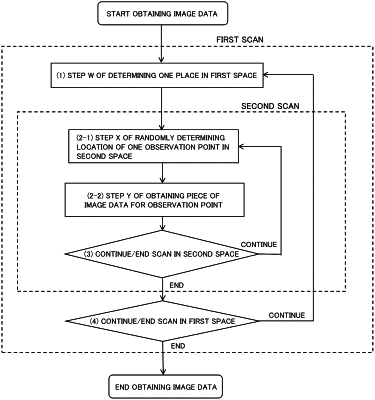| CPC G06T 7/75 (2017.01) [G01N 21/65 (2013.01); G02B 21/006 (2013.01); G02B 21/0036 (2013.01); G06T 7/62 (2017.01); G06T 7/66 (2017.01)] | 20 Claims |

|
1. A method for obtaining image data of a subject, the image data obtaining method comprising:
a first scanning step including a plurality of steps W, each step W being a step of determining one place existing in a one-dimensional, two-dimensional, or three-dimensional first space; and
a second scanning step of scanning insides of second spaces including at least one of the places, wherein
the second scanning step includes a step X of randomly determining a location of an observation point (hereinafter, written as “second random determination”) and a step Y of obtaining a piece of image data for the observation point, and,
at a time point of end of scanning an inside of one of the second spaces, the second space has a first region including 50% of observation points and a second region existing outside the first region and including remaining 50% of the observation points, the second region being larger than the first region by at least 15%.
|